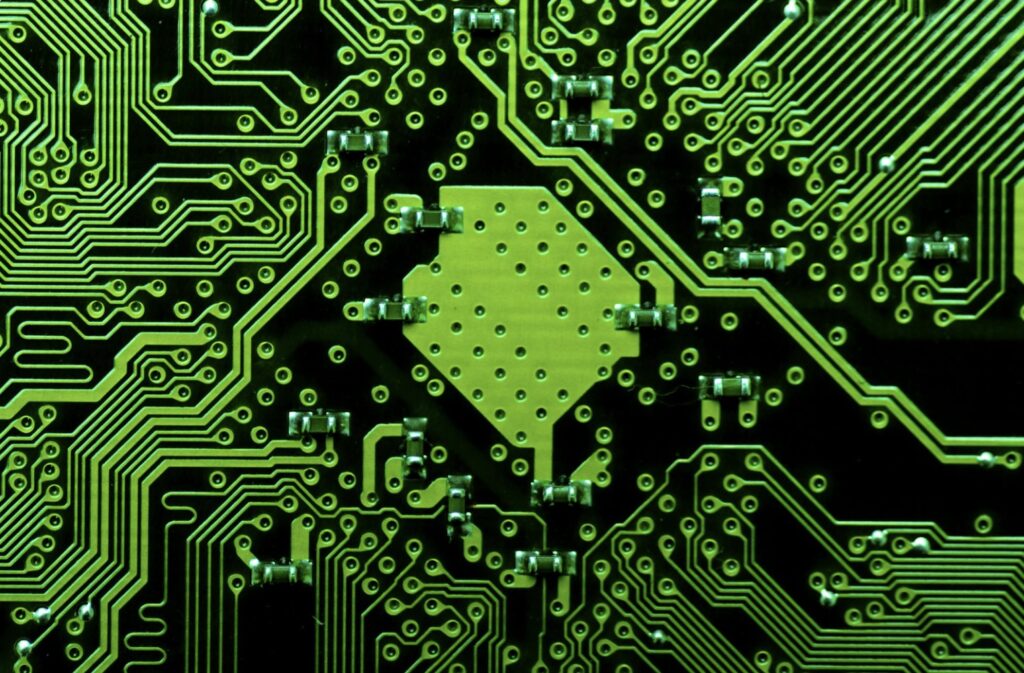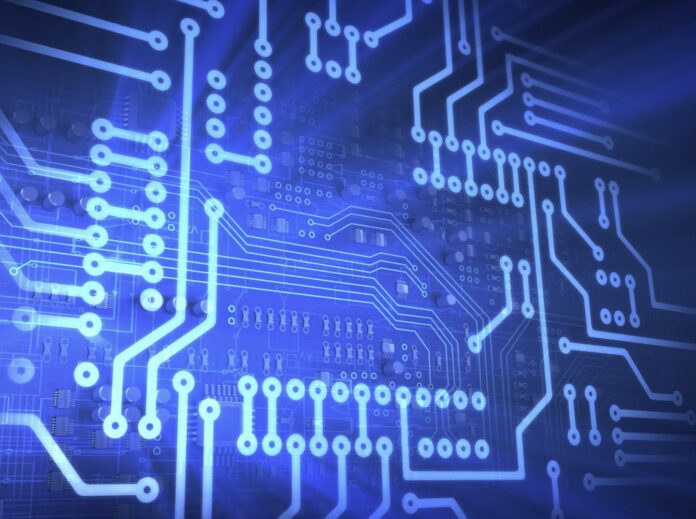In the field of electronic engineering, particularly when discussing PCB design, the term “bus” frequently arises, prompting questions about its nature, purpose, and design considerations. This article delves into the specifics of PCB bus layout, providing a comprehensive overview of essential aspects, from basic definitions to detailed explanations of layout structures, physical diagrams, and considerations critical in PCB manufacturing.
What is a Bus in PCB Design?
In PCB design, a “bus” refers to a collection of electrical traces or conductive pathways that simultaneously transfer multiple signals or electrical data between different parts of a circuit. These signals generally represent data, addresses, control information, or power lines. Typically, buses are found in applications that demand high-speed data transmission, precise timing, and synchronization between multiple components or subsystems on a PCB.
The importance of buses in PCB design stems from their ability to simplify complex circuits by grouping multiple related signals into organized channels. This arrangement significantly reduces clutter on a PCB, enhances signal integrity, and aids in ease of troubleshooting and repair. Bus architectures are commonly seen in:
- Microprocessor-based circuits
- Memory modules
- Communication devices (e.g., Ethernet, USB, PCI Express)
- Embedded systems
- High-speed digital applications
Types of PCB Buses
Several bus types exist in PCB design, each tailored to specific purposes or technologies:
- Address Bus: Carries address information from processors to memory or peripherals.
- Data Bus: Transfers actual data bits among integrated circuits, such as between processors and memory.
- Control Bus: Manages communication timing and control signals for coordinating various components.
- Power Bus: Distributes stable voltage/current to different PCB sections or components.
Careful PCB bus design ensures optimal signal integrity, minimal electromagnetic interference (EMI), and efficient data flow across circuits.
What is a PCB Layout Structure?
A PCB layout structure refers to the arrangement and routing of components, conductive traces, and various layers within a printed circuit board. It directly influences electrical performance, thermal management, mechanical stability, and manufacturability. An effective PCB layout structure considers placement strategies, layer stack-up arrangements, ground planes, power planes, signal integrity, and impedance control.

Key Elements of PCB Layout Structure:
- Component Placement: Optimal positioning of components to reduce electrical noise and enhance circuit performance.
- Signal Routing: Paths taken by traces, ensuring shortest length and minimal cross-talk.
- Layer Stack-up: Configuration of layers within multi-layer boards, typically incorporating ground and power planes to minimize EMI and maintain impedance.
- Power Distribution: Dedicated copper areas for stable power delivery to components.
- Grounding Strategy: Proper grounding to reduce electromagnetic interference and ensure stable electrical reference points.
The structure of PCB layouts varies widely based on application needs. For example, RF and high-speed digital circuits require specialized structures emphasizing impedance control and signal integrity, while high-power designs emphasize thermal management and robust power distribution.
What is the Physical Layout of a PCB?
The physical layout of a PCB refers to the actual placement and routing of components, vias, traces, and planes on the board’s surface and internal layers. It’s the tangible realization of a schematic circuit into a manufacturable format.
A well-designed physical PCB layout addresses:
- Component orientation and density
- Trace routing and widths (impacting impedance and current capacity)
- Thermal relief strategies for power components
- Signal integrity considerations (trace lengths, differential pairs, and grounding)
- EMI/EMC compliance via grounding, shielding, and separation strategies
- Manufacturing constraints, including clearances, hole diameters, and layer stack-ups
Physical Layout Best Practices:
- Minimizing Trace Length: Shorter traces reduce signal loss, improve signal integrity, and limit electromagnetic interference.
- Avoiding 90-Degree Angles: Rounded or chamfered corners help minimize reflections and maintain signal quality.
- Differential Pair Routing: Differential signals (like USB or Ethernet) must have equal lengths and consistent impedance to maintain data integrity.
- Clear Separation of Digital and Analog Circuits: Proper separation helps prevent signal contamination and noise coupling.
- Thermal Management: Strategically placed thermal vias and copper pours facilitate heat dissipation, protecting sensitive components and enhancing reliability.
The physical layout greatly influences PCB manufacturing quality, costs, yield, and overall performance of the final electronic product.
What is a Physical Layout Diagram?
A physical layout diagram is a detailed graphical representation of a PCB design, clearly showing exact component placement, trace routing, via locations, and reference designators. Unlike schematics (which focus on logical connections), physical layout diagrams depict actual physical arrangements of circuits, layers, and component footprints.
Typically produced using PCB design software such as Altium Designer, Eagle, KiCAD, or Cadence, a physical layout diagram helps:
- Identify component locations and orientations
- Validate connectivity against schematic designs
- Enable inspection for potential design issues before production
- Guide PCB manufacturing processes (fabrication and assembly)
- Aid troubleshooting and maintenance post-production

A clear, accurate physical layout diagram greatly assists PCB manufacturers, ensuring design intentions align perfectly with fabrication realities.
Additional Relevant Topics in PCB Bus Layout
Signal Integrity and PCB Bus Design
Signal integrity is paramount in PCB bus layouts. High-speed buses such as DDR, PCIe, or USB require precise impedance matching, controlled dielectric constants, and balanced differential pair routing. Without proper attention, buses may suffer from reflections, overshoot, undershoot, or crosstalk, severely degrading system performance.
EMC and EMI Considerations
PCB bus layouts must comply with electromagnetic compatibility (EMC) regulations. Design techniques such as proper grounding, controlled impedance, shielding, and layout separation help minimize unwanted radiation (EMI), ensuring regulatory compliance and reliability.
Thermal Management for High-Density PCB Buses
Bus layouts in densely packed PCBs often generate heat due to high-speed signals and currents. Advanced thermal management techniques—such as thermal vias, copper planes, and strategically placed heat-sensitive components—ensure bus reliability and reduce thermal stress.
PCB Manufacturing Considerations
PCB bus designs must consider manufacturing tolerances, such as minimum trace widths, copper thickness, drill hole sizes, and pad-to-hole ratios. Considering these constraints early prevents costly redesigns or manufacturing errors.
Conclusion
Effective PCB bus layout design integrates careful considerations of signal integrity, thermal management, electromagnetic compatibility, and manufacturing practicality. By clearly understanding buses, PCB layout structures, physical layouts, and detailed diagrams, PCB designers can achieve optimal results, ensuring robust, high-performance electronic systems.
The importance of thoughtfully designed PCB bus layouts cannot be overstated. It directly affects performance, reliability, manufacturability, and the overall success of electronic products in competitive, technologically advanced markets. Following best practices outlined above ensures efficient, reliable, and compliant PCB designs capable of meeting today’s complex electronic demands.
